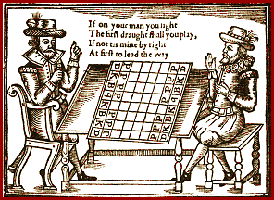|
Imagery of Chess
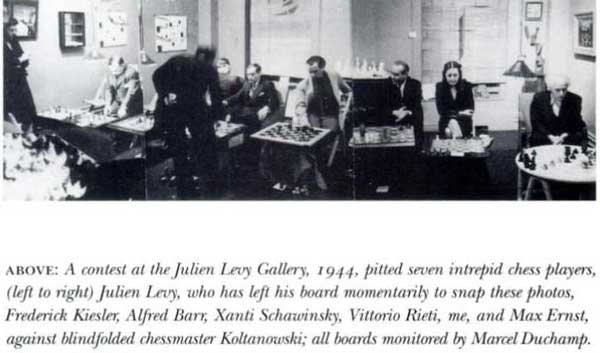
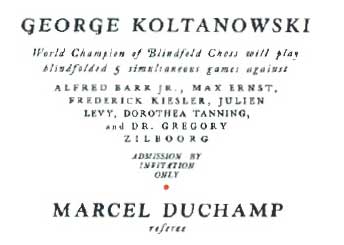
from the Imagery of Chess
brochure
It says George Koltanowski....will play blindfolded
5 simultaneous games against:
Alfred Barr, Jr.
Max Ernst
Fredrick Kiesler
Julien Levy
Dorothea Tanning
Dr. Gregory Zilboorg
-That's 6 people!
Here's the ones who actually played:
Alfred Barr, Jr.
Max Ernst
Frederick Kiesler
Julien Levy
Dorothea Tanning
Xanti Schawinsky
Vittorio Rieti
Chess Review (January 1945)
claimed:
On the evening of January 6th, blindfold master George
Koltanowski
gave an exhibition of his skill at the Levy Gallery. His teller, who called
out the moves, was Marcel Duchamp - the artist who created a
sensation many years ago by his "Nude Descending a Staircase."
Duchamp stopped painting when he took up chess and is now one of
the leading spirits in the "art applied to chess" movement. Most of
Koltanowski's seven opponents were the artists whose works hung on
the walls or stood on pedestals in the exhibition room. The players were
seated at boards on which four reproductions of the Max Ernst chess-
men and other modern styles were arranged.
The blindfold champion surveyed the scene with interest, examined
the
peculiar pieces with which his opponents were to play, then declared
with feeling: "This must be the first exhibition in which the blindfold
player has the advantage."
The caption in the photo above (from Between Lives: An artist and Her World
by Dorothea Tanning) mistakenly gives "1944" as the year
of the blindfold exhibition.
Dorothea Tanning named the seven chess players.
"There, one evening (January 6, 1945) in the Julien
Levy Gallery a small invited public watched seven chessboards manned by seven
intrepid players: Julien himself; Fredrick Kiesler, avant-garde architect and
dreamer; Alfred Barr, the director of the Museum of Modern Art, Xanti Schawinsky,
chess whiz; Vittorio Rieti, composer dear to Balanchine; Max Ernst; and me,
Dorothea, all braced to take on blindfolded chess master George Koltanowski,
Marcel Duchamp called out the moves. (For the record: everyone lost except
Kiesler, who managed a draw.)"
-Between Lives: An artist and Her World
by Dorothea Tanning. pp. 90-92
George Koltanowski was also a refugee from the the
war in Europe who was in South America when the Nazis invaded Belgium, his home.
He and Duchamp had formed the Greenwich Village Chess Club in 1942.
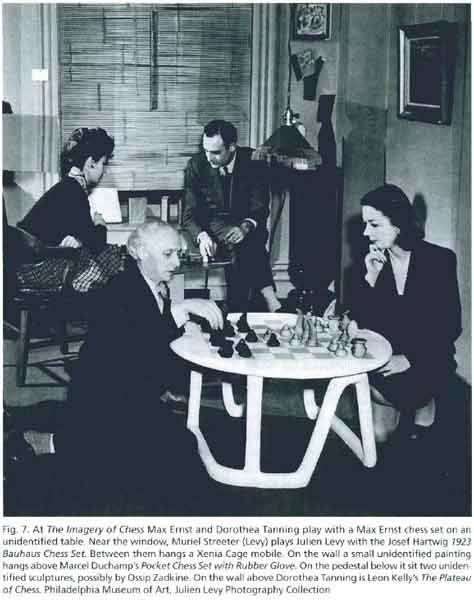
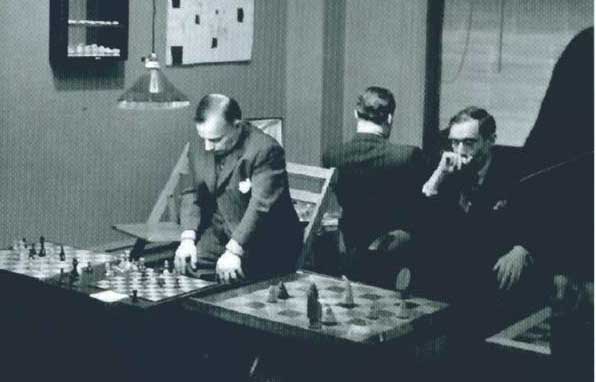
Frederick Kiesler, George Koltanowski (facing away), Alfred Barr,
Jr. (playing on an Ernst strategic board with an Ernst set)
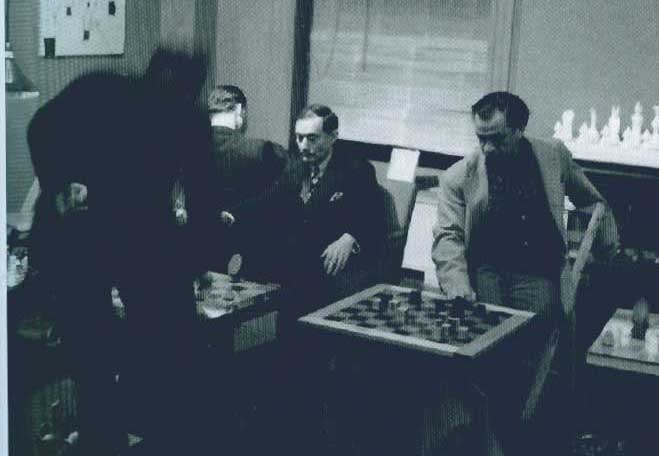
Duchamp, moving for Koltanowski (facing away); Alfred Barr, Jr.
using an Ernst set; Xanti Schawinsky using a Bauhaus set.
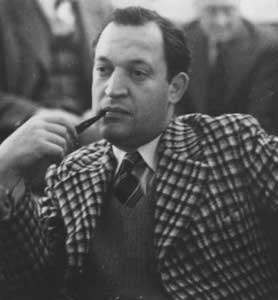
George Koltanowski, 1940
|
